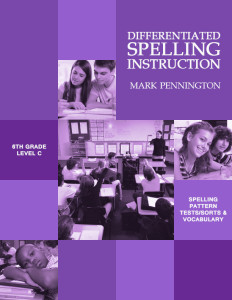Latin Abbreviations for Time

Latin Abbreviations for Time
Latin Abbreviations for Time Writing Opener
Common Core Language Standard 2
Teacher Talk: We all know that a.m. and p.m. are used to show time. But what do these abbreviations stand for and why do we use them? Before we get to our lesson and answer the question, it’s helpful to understand a bit about how time works. Since the earth is a sphere, it has 360 degrees. In our 24 hour clock each hour would be 15 degrees. The math is simple: 360 divided by 24 = 15. The imaginary longitude lines that go from the North to the South pole are called meridians when we talk about time. Each meridian has 15 degrees, or 1 hour of the 24 hours. Since the earth spins on its axis, but the sun does not, time changes as we go from morning (before noon meridian) to evening (after noon meridian).
Today’s mechanics lesson is on using Latin abbreviations for time. Display the lesson here: Latin Abbreviations for Time
Read the mechanics lesson and study the examples.
Use periods to abbreviate the Latin expressions we use to indicate before noon and after noon. Antemeridian is the time from midnight until noon and is abbreviated as “a.m.” Postmeridian is the time from noon until midnight and is abbreviated as “p.m.” Examples: 7:30 a.m., 12:00 p.m.
Notice that the a.m. and p.m. Latin abbreviations for time are always written in lower case.
Now circle or highlight what is right and revise what is wrong according to mechanics lesson.
Practice: I woke up this morning at 7:30 AM. because I fell asleep last night at 10:00 p.m.
Let’s check the Practice Answers.
Mechanics Practice Answers: I woke up this morning at 7:30 a.m. because I fell asleep last night at 10:00 p.m.
Now let’s apply what we have learned.
Writing Application: Write a sentence or two, using both an antemeridian and a postmeridian time.
This Latin Abbreviations for Time writing opener is part of a comprehensive language conventions lesson from Pennington Publishing’s Teaching Grammar, Usage, and Mechanics programs.
*****

Pennington Publishing Grammar Programs
Teaching Grammar, Usage, and Mechanics (Grades 4, 5, 6, 7, 8, and High School) are full-year, traditional, grade-level grammar, usage, and mechanics programs with plenty of remedial practice to help students catch up while they keep up with grade-level standards. Twice-per-week, 30-minute, no prep lessons in print or interactive Google slides with a fun secret agent theme. Simple sentence diagrams, mentor texts, video lessons, sentence dictations. Plenty of practice in the writing context. Includes biweekly tests and a final exam.
Grammar, Usage, and Mechanics Interactive Notebook (Grades 4‒8) is a full-year, no prep interactive notebook without all the mess. Twice-per-week, 30-minute, no prep grammar, usage, and mechanics lessons, formatted in Cornell Notes with cartoon response, writing application, 3D graphic organizers (easy cut and paste foldables), and great resource links. No need to create a teacher INB for student make-up work—it’s done for you! Plus, get remedial worksheets, biweekly tests, and a final exam.
Syntax in Reading and Writing is a function-based, sentence level syntax program, designed to build reading comprehension and increase writing sophistication. The 18 parts of speech, phrases, and clauses lessons are each leveled from basic (elementary) to advanced (middle and high school) and feature 5 lesson components (10–15 minutes each): 1. Learn It! 2. Identify It! 3. Explain It! (analysis of challenging sentences) 4. Revise It! (kernel sentences, sentence expansion, syntactic manipulation) 5. Create It! (Short writing application with the syntactic focus in different genre).
Get the Diagnostic Grammar, Usage, and Mechanics Assessments, Matrix, and Final Exam FREE Resource:
![]()








